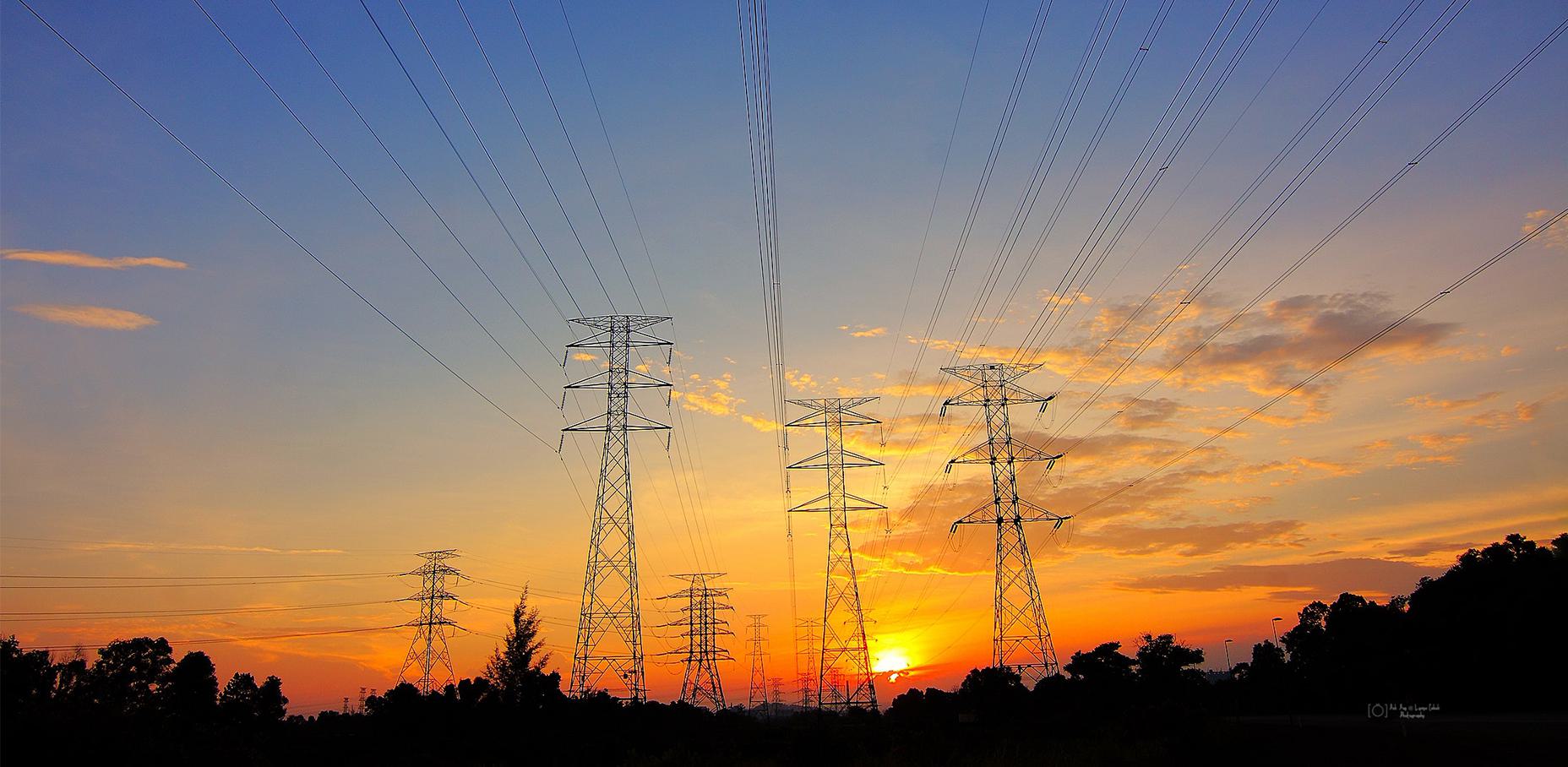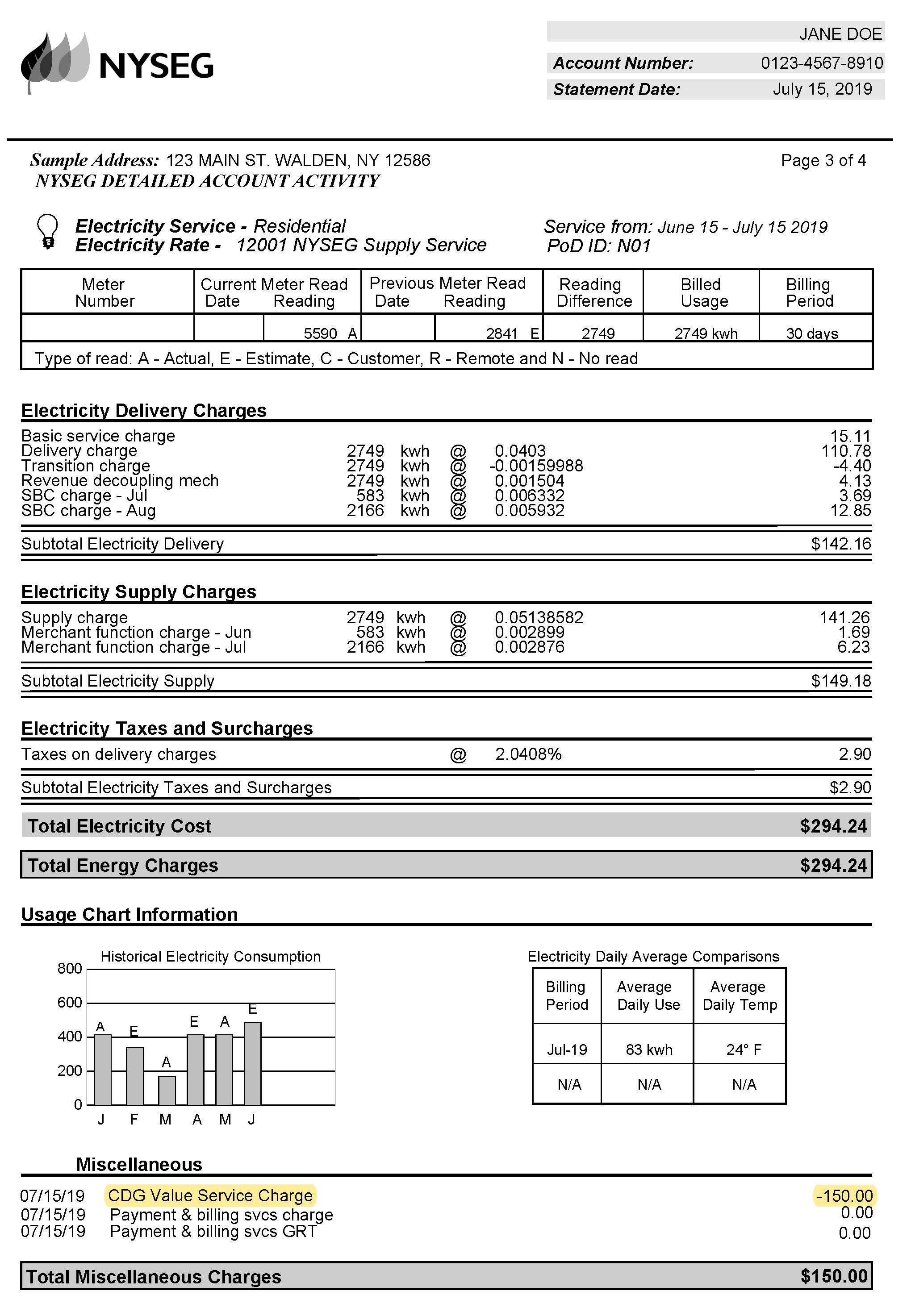
The monthly electric bill - an often-ignored piece of mail commonly discarded alongside coupon books and free magazine previews. Sure, electric bills are important, but who cares what they say? Just pay what you owe and move on with your day.
That’s a pretty common attitude amongst most energy consumers. Turns out, however, that your monthly electric bill is an important touchpoint with your utility filled with detailed explanations of charges and usage. If understood and used correctly, this data can aid in making better decisions about energy usage, finding opportunities for savings, and ultimately make a meaningful environmental impact.
What do utility bills have to do with BlueWave? We offer community solar subscriptions to residents in New York State Electric & Gas (NYSEG) service territory and we’ve been working closely with NYSEG to coordinate billing processes and solar credits. Their monthly bill is a great example of the breadth of data available to us, the customers. We dissected it to better understand how they determine and communicate charges. This article breaks down the NYSEG bill components from top to bottom and aims to leave you more knowledgeable on what it is you’re paying for, why it matters, and how you can save.
Account and Meter Information
NYSEG bills are typically four pages long. A summary of your account and monthly charges appear on page one while messages and contact information appear on page two. Page three is where you’ll find the real meat of your bill with a detailed breakdown of usage and charges. On page three you’ll find the section titled NYSEG Detailed Account Activity, which shows important account and meter information.

Sample NYSEG electric bill
At the top of page three the account section includes the following information:
- Electric Service – An indication of the type of customer you are; for most, it is simply residential, but for commercial properties it could say non-residential.
- Electricity Rate or Rate Class – Set depending on your customer type and determines the price you pay per each kilowatt hour (kWh) of electricity delivered to your property.
- Service Dates – The dates for which you are being billed.
- Point of Delivery ID (PoD ID) – A unique identifier for your account that is helpful for third-party electric suppliers. The ID is used to identify your account if you opt into a retail electric program in lieu of NYSEG’s standard electricity supply.
Next, you’ll find the meter information. Readings from your meter are displayed in a table that includes columns for your meter number, current and previous meter reads, reading difference, billed usage, and billing period.
- Billed Usage – Your electric usage is measured in kilowatt hours (kWh), which is a measure of how many kilowatts (1 kilowatt = 1,000 watts) of electricity you used over the period of an hour. For example, a 1,000 Watt microwave running for an hour = 1 kWh. The usage is tracked and aggregated by your meter. This amount is called Billed Usage. A typical New York household uses around 550 kwh on an average month, but this can fluctuate greatly depending on the size of the house, its energy efficiency, and the time of year. (EIA) Run the A/C in the summer? Expect to pay for more kWh! Always have the TV playing in the background? You’re paying for those kWh.
- Type of read – Because there are many meters to read all throughout the state, NYSEG alternates each month between a physical reading of your meter and a projection of what they expect your meter to read that month. These numbers are listed as kilowatt hours (kWh) and an “A” is used to signify an Actual or physical reading, and an “E” is used to signify an estimated or projected reading. Once data is collected from the next reading, any discrepancy in an estimated reading is adjusted for in subsequent bills so you don’t need to worry about false estimates.

Sample Electricity Delivery Charge Table
Electricity Delivery Charges
About halfway down page three you’ll find Electricity Delivery Charges, which are applied to all utility customers. These charges allow the utility to cover the infrastructure, maintenance, and operational costs incurred from transmitting electricity.
- Basic service charge – Covers the costs of meter readings, billing operations, and some aspects of electricity delivery itself. It is a fixed charge and does not vary from month-to-month.
- Delivery charge - What you pay NYSEG to deliver electricity to your household or property. Revenue from delivery charges is put towards things such as powerline repair and sub-station operations.
- Transition charge – Determined by comparing the current cost of energy supply to NYSEG’s existing long-term electricity supply contracts. The transition charge will either appear as a negative or positive line item on your electric bill depending on the current cost of electricity on the open market.
- Revenue decoupling mechanism – Determined by NYSEG’s annual revenue projection, and varies based on actual revenue. If revenue is lower than projected, the difference is collected from customers. If revenue is higher than projected, the excess is passed onto customers. This is meant to minimize financial impact to utilities that are enabling energy efficiency programs that help customers reduce electricity consumption.
- System benefits charges (SBC) – State mandated charge which is used to fund clean energy and energy efficiency programs.

Sample Electricity Supply Charge Table
Electricity Supply Charges
Electricity supply charges reflect the energy you use and the terms you agreed to with NYSEG. This section can also be found on page three and includes the following specific charges:
- Supply charges – The product of your electricity usage (listed in kWh), and your electric rate (listed as a decimal after the @ in the supply charge line item). While your usage is impacted primarily by your household’s behavior and the efficiency of appliances in your home, electricity rates are determined by NYSEG as the energy supplier. Your electric rate reflects the cost it takes to generate a unit of electricity in your area. Factors such as electricity demand, availability of generation sources, fuel costs, and power plant availability can determine your electric rate. (EIA)
- Merchant function charges – The cost for NYSEG to obtain the supply of electricity for customers.

Sample Electricity Taxes and Surcharges Table
Electricity Taxes and Surcharges
Towards the bottom of page three taxes are added to your total charges and total energy costs are calculated. This is not necessarily the amount that you owe, as credits, such as community solar bill credits, may be applied to your account in the miscellaneous section below. Note if you receive natural gas from NYSEG then your electricity charges and natural gas charges will be calculated separately and the Total Energy Cost line will be pushed to the fourth page of your bill.
- Taxes on delivery charges – Applicable taxes for the delivery of electricity in New York.
- Total Energy costs – Totaled costs of electricity (supply, delivery, taxes) and natural gas (if applicable)

Sample Usage Chart Information
Usage Chart Information
To get a snapshot of your historic monthly and average electricity usage, locate the Usage Chart Information at the bottom of the third page of your bill. This gives you 12 months of usage history and a side-by-side comparison of daily use averages for consecutive years. It can be an informative exercise to try to make sense of your electric use history and attribute the causes behind its ebbs and flows. For example, spikes in usage during the summer often correlate to AC units cooling your home.

Sample Miscellaneous Charges Table
Miscellaneous Charges
Any additional charges may appear here, including, for example, charges for payment and bill processing. This is also section in which you’ll find your bill credits if you’ve signed up for a community solar program. These credits will appear as a negative line item and will usually greatly reduce what you owe NYSEG. Community solar bill credits are labeled as CDG Value Stack Credits.
Adding Community Solar to your bill
NYSEG customers now have the option of adding community solar savings to their NYSEG bill. Enrolling in community solar adds a new negative line item in the Miscellaneous section of the bill. Participation in community solar is rewarding for members who, simply by joining, support a renewable energy project in their state that is 100% solar and typically save 5%-10% on their total electric costs. Plus, when you sign up for community solar, you keep NYSEG as your utility provider so you don't have to worry about changes in reliability while supporting renewables.
Why utility bills are important
Your utility bill sheds light on your energy use behavior. Reviewing your usage can inform you of opportunities to reduce consumption and allows you to monitor progress. Successfully lowering your usage will not only save you money but also will help to lower carbon emissions. Most electricity is generated from fossil fuels, burning less of which mitigates climate change, increases air quality, and improves the overall sustainability of our economies. The cleanest form of energy is energy not used at all.
Learn more about how to get involved in community solar by clicking here, by reaching us at learnmore@bluewavesolar.com or check your eligibility today!


